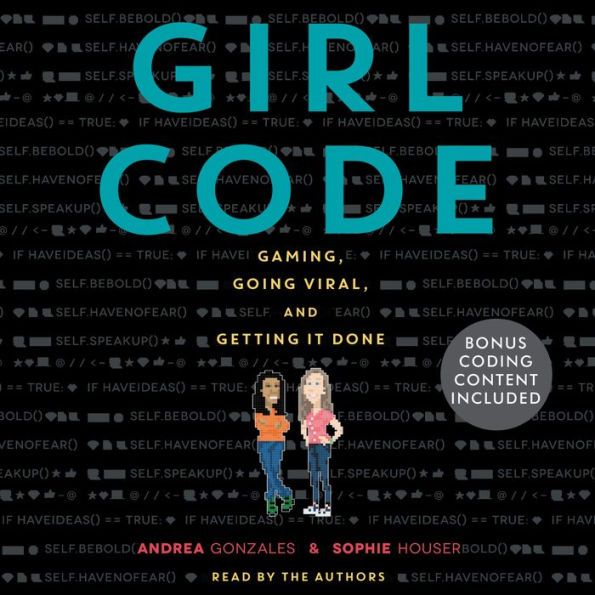APRIL 2017 - AudioFile
The authors give listeners an inside look at how two teenaged girls are breaking the tech world’s glass ceiling while challenging the taboo of discussing menstruation. In 2014, Andrea "Andy" Gonzales and Sophie Houser’s summer project at Girls Who Code became the viral computer game Tampon Run. The girl coders lend their voices to the narration, taking on separate chapters as well giving listeners an introductory lesson on how to find tools and resources to start coding. An accompanying PDF supports this part of the audio presentation. Since the success of their game, the pair have been invited to Silicon Valley and offered numerous media appearances and interviews, experiences that are reflected in their thoughtful, straightforward performance. They expertly reflect the highs and lows of their incredible journey. J.C. © AudioFile 2017, Portland, Maine
Bulletin of the Center for Children's Books
Brilliantly funny... Readers seeking a factual title about enterprising teens creating solutions to social problems will find Andrea and Sophie’s story inspirational
Brightly.com
Set against the backdrop of coding camp, Girl Code is the story of two teen girls who create a viral video game and become famous—except this story isn’t fiction.” (from the article “10 Books About Coding to Inspire Girls to Lead the Next Tech Revolution”)
Brightly
Set against the backdrop of coding camp, Girl Code is the story of two teen girls who create a viral video game and become famous—except this story isn’t fiction.” (from the article “10 Books About Coding to Inspire Girls to Lead the Next Tech Revolution”)
Kirkus Reviews
2016-12-21
The teens behind the web video game "Tampon Run" tell how they got started in programming.This is a first-person account of how Filipina Andrea "Andy" Gonzales from the East Village and the Bronx and white Sophie Houser from the Upper West Side met at the Girls Who Code summer program and joined forces to create a video game that received viral media attention. The chapters are organized chronologically and, inside each, switch between the two authors' lively narrations. First, they introduce themselves and their backgrounds with programming: Sophie was a high achiever crippled by self-doubt and terrified of public speaking who was drawn to the GWC program to learn a new way to express herself; Andy was a lifelong gamer and programmer's daughter who had already attended coding programs by the time she attended GWC. What brought the two together for their project was a desire to combine social commentary with their coding, resulting in their successful game. The game (and networking opportunities from GWC) has brought them attention and many more opportunities, but it also took more time and energy than they had to spare. By book's end, they find themselves evaluating their futures with technology. The psychology of self-doubt and value of persistence are well-presented—the co-authors stress that the greater the frustration, the better the payoff. Tech-centered empowerment for those who feel voiceless. (coding appendix with glossary, sample code, resources) (Memoir. 12-17)



